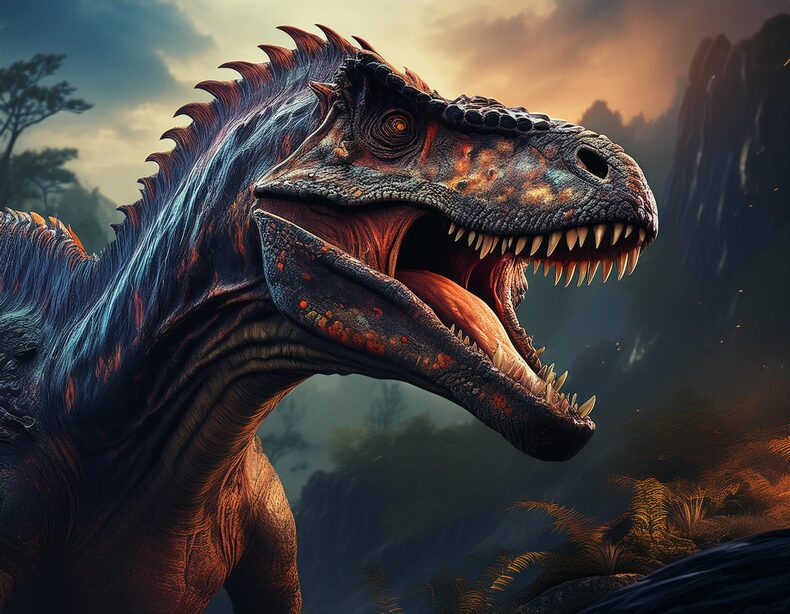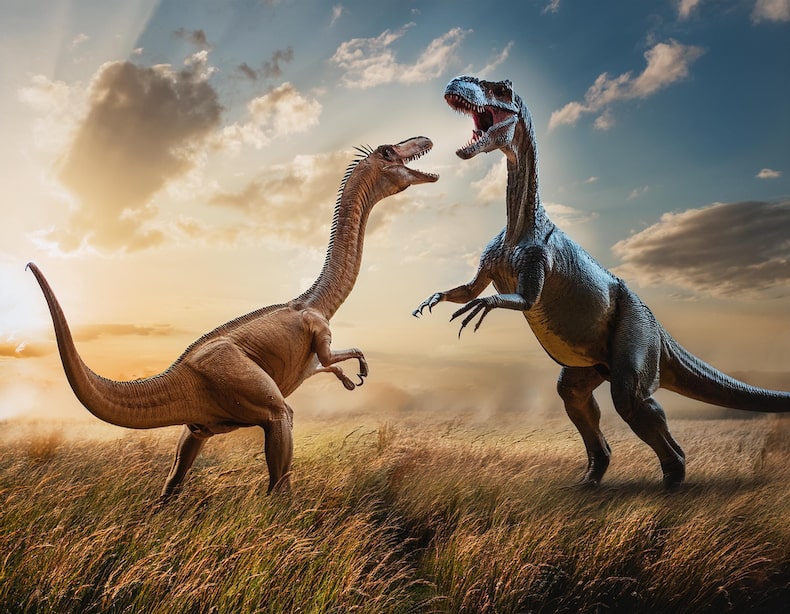About 100 million years ago, there was a place on the planet where no human could have survived, because it was home to the most fearsome predators that have ever existed in history.
Have you ever thought about whether you could survive among the giant and fearsome dinosaurs Who lived in the Cretaceous period? Even though movies like Jurassic Park They give us an idea of what this scenario would be like, they also make us sigh with relief at not having to coexist together.
And the fact is that we probably wouldn’t stand a chance against these creatures, and even less so in a specific region of the world declared as “the most dangerous place on Earth” because it was home to the most fearsome predators that ever existed in history.
“A time traveler wouldn’t survive in this place.” ” said the paleontologist in charge of the investigation.

What was the most dangerous place in the world during the Cretaceous period?
Fossils are the closest we have to life that existed millions of years ago on our planet Earth. This is what paleontology studies: of them, They can reconstruct what dinosaurs looked like approximately how tall and heavy they were, what their bodies looked like and functioned like, among other things.
It is with this information that A group of paleontologists, led by Dr. Nizar Ibrahim, from University of Detroit Mercy in the United States, managed to determine the location of the most dangerous place in world history.
It would be southeastern Morocco, in the region that hosts the Kem Kem Formation.
In The study, published in the scientific journal ZooKeys Scientists have determined that In this place in Morocco – about 100 million years ago – lived the most fearsome predators that ever existed.
And it is likely that no human could have survived there.
This research, considered the most comprehensive on fossil vertebrates from the Sahara in almost a century, showed that In Morocco lived colossal reptiles that dominated the sky, giant carnivorous dinosaurs that roamed the ground and monstrous fish invaded the rivers.

That’s when Ibrahim, the study’s leader and lead author, said: “A time traveler wouldn’t survive long in this place.”
Research, in addition to be a terrifying glimpse of what the world was like millions of years ago, It is also significant because the last discovery that led to discoveries of this magnitude was made almost a hundred years ago, in 1936, by German paleontologist Ernst Freiherr Stromer von Reichenbach.
Since then, The researchers focused on exploring the Kem Kem Formation in Morocco because it is an area rich in the quantity and quality of predator fossils, which show how deadly this ecosystem was many years ago.
What Morocco, the most dangerous place in the Cretaceous period, looked like
As explained in Infobae , The Kem Kem Formation – which is the area of Morocco where fossils of hundreds of dangerous predators have been found – is a group of Cretaceous rock formations.
It is a very ancient place which shelters many fossils of large carnivores of high quality: from giant fish to predatory dinosaurs and monstrous crocodiles.
Among the most remarkable discoveries, There are the largest dinosaurs recorded, such as the Carcharodontosaurus, a carnivore that had teeth up to 20 centimeters long and stood 8 meters tall.

They also found fossils of Deltadromeus, a dinosaur of the velociraptor family, which had large hind legs that allowed it to run quickly and measured about 8 meters long.
He did, however, stress the Spinosaurus, a fearsome creature, easily identified by its dorsal sail, which could hunt on land and in water.
In addition, Huge flying reptiles called pterosaurs soared in the skies over the region. and various giant fish lived in the waters, such as the Onchopristis, a sawfish with teeth as sharp as knives.
Also living in the water was the Coelacanthus, a fish four times the size of its relative, the Coelacanthmorphs.
According to David Martill, co-author and researcher at University of Portsmouth in England, Although these fish were fearsome, they were usually food for predators.
“This place was filled with absolutely enormous fish, including giant coelacanths and lungfish. There was also a huge freshwater sawfish called Onchopristis with the most fearsome rostral teeth, they look like barbed daggers, but wonderfully shiny.

In this line, The researchers and the study showed that at one point in history, there was an environment so hostile that any weaker creature was destined to become easy prey for these giant predators.
“The vertebrate group includes bony and cartilaginous fish, rare amphibians, snakes, various turtles and crocodyliforms, sauropod and theropod dinosaurs, and toothed and toothless pterosaurs. Curiously, ornithischians are represented only by rare footprints and an isolated tooth,” the research says.
“Many vertebrates are extremely large forms for their clade, including giant coelacanths, crocodyliforms and dinosaurs, but there are also small animals.”
In the introduction to the study, they concluded that “the work presented here constitutes the first comprehensive coverage of the Kem Kem Group vertebrate assemblage and its geological and biological features. “We hope this will stimulate exploration and discovery.”
Thus, the discoveries in the Kem Kem Formation in Morocco represent a major step forward in the field of paleontology, since the quality of the well-preserved fossils has allowed scientists to reconstruct this formidable phase of Earth’s history, in addition to understanding how species coexisted with each other in the same ecosystem.
Furthermore, Kem Kem has managed to position itself as one of the richest paleontological sites in the world, which could give rise to new studies and research to better understand this era.
Source: Latercera
I am David Jack and I have been working in the news industry for over 10 years. As an experienced journalist, I specialize in covering sports news with a focus on golf. My articles have been published by some of the most respected publications in the world including The New York Times and Sports Illustrated.


